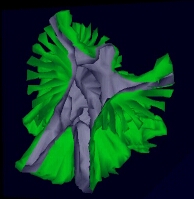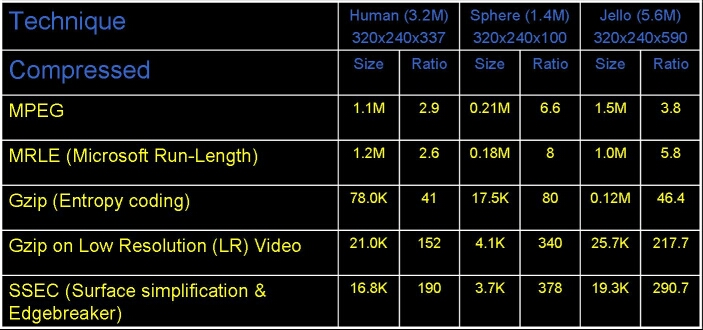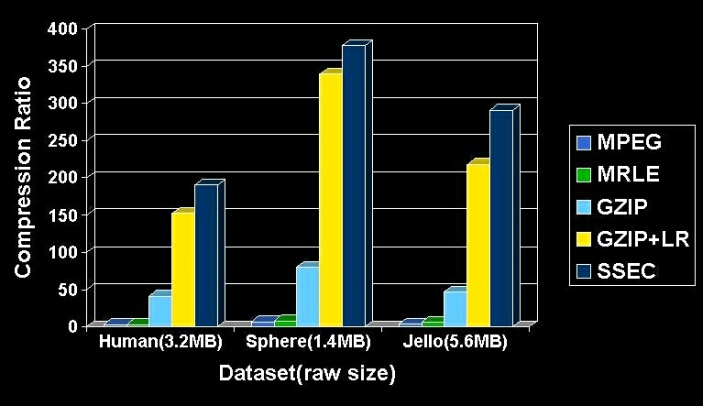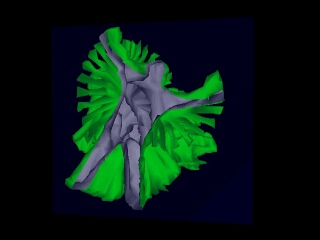
Digitized cell animations
are typically composed of frames, which contain a small number of regions,
which each contain pixels of the same color and exhibit a significant level
of shape coherence through time. To exploit this coherence, we treat the
stack of frames as a 3D volume and represent the evolution of each region
by the bounding surface of the 3D volume V that it sweeps out.
To reduce transmission costs, we triangulate and simplify the bounding surface
and then encode it using the Edgebreaker compression scheme. To restore
a close approximation of the original animation, the client player decompresses
the surface and produces the successive frames by intersecting
V with constant-time planes. The intersection is generated in real-time
with standard graphics hardware through an improved capping (i.e. solid
clipping) technique, which correctly handles overlapping facets. We have
tested this approach on real and synthetic black&white animations and
report compression ratios that improve upon those produced using the MPEG,
MRLE, and GZIP compression standards for an equivalent quality result.
Space-Time Surface Simplification and Edgebreaker Compression for 2D Cel Animations
Vivek Kwatra and Jarek Rossignac
International Journal on Shape Modeling, Volume8, Number 2, December 2002
Paper | BibTex
Surface Simplification and Edgebreaker Compression for 2D Cel Animations
Vivek Kwatra and Jarek Rossignac
Proc. International Conference on Shape Modelling and Applications (SMI 2002)
Paper | Presentation | BibTex

Results:
Videos:
Compressed sizes and ratios (comparison with other techniques):

Compression ratios (comparison graph):


